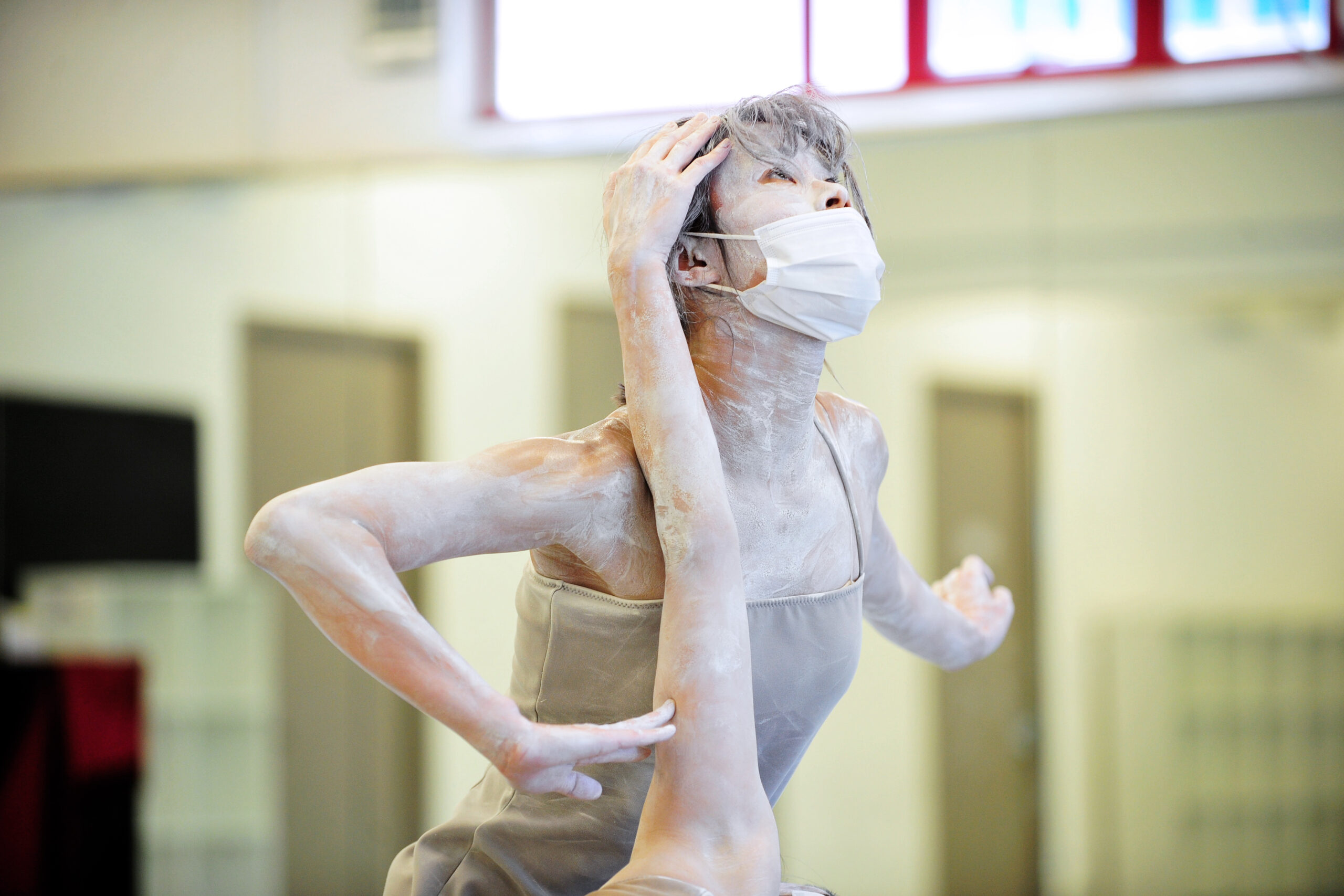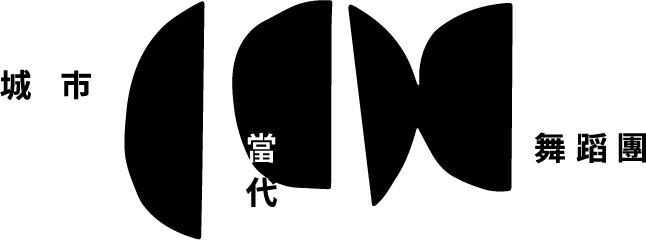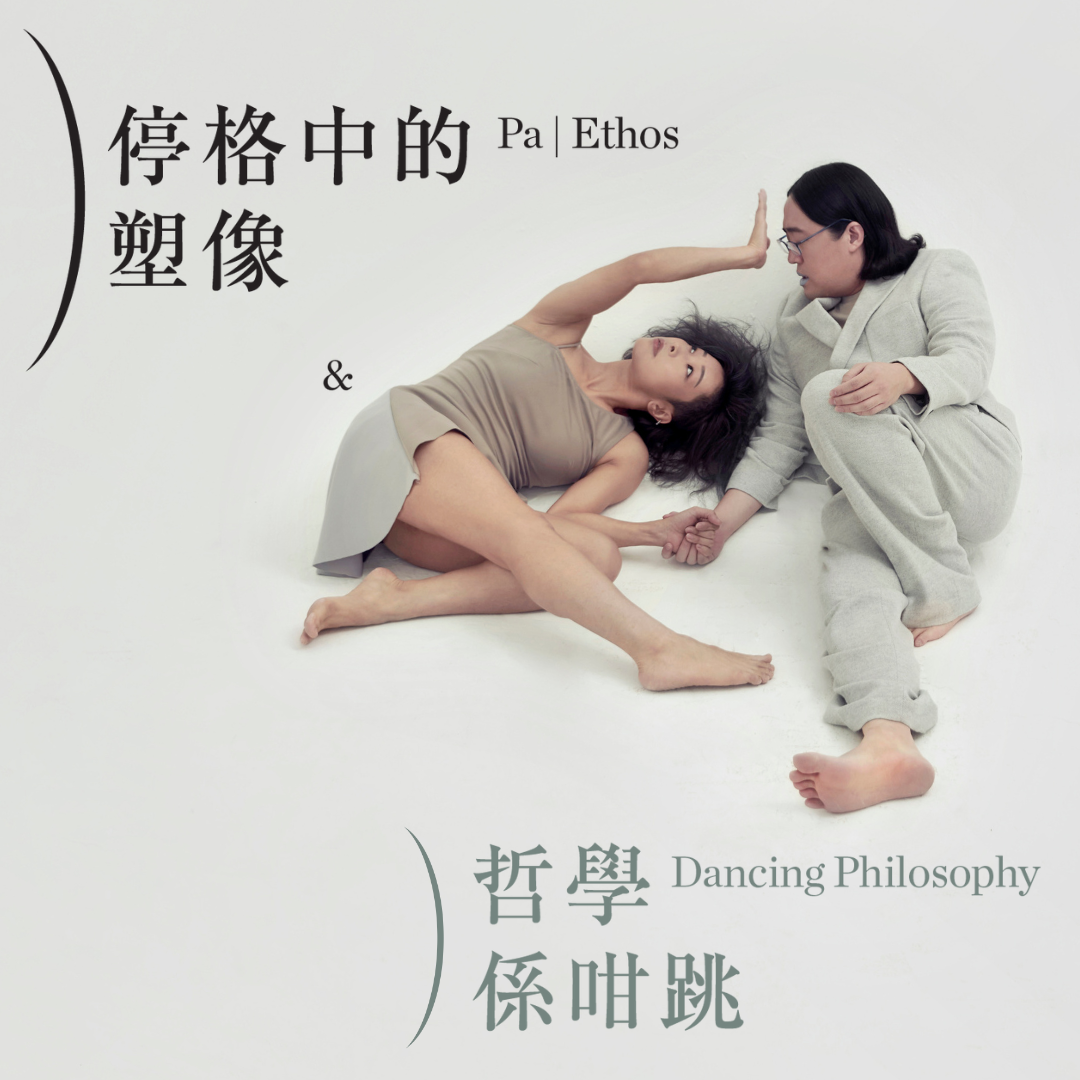
Written by Melissa LEUNG
Company Dramaturg, City Contemporary Dance Company
“Such indescribable meaning could only be expressed by dance itself…It’s easier to convey your feeling when you are physically there,” said Sang Jijia about online rehearsals at the beginning of the year. When I walked into the rehearsal room last week, sitting quietly in the corner, watching Sang perfecting dancers’ movements, I could better understand what he meant. “Holding a dancer’s hand, feeling the warmth of one’s’ body, the momentum, direction, process of how the body move from one point to another, how the moment orbit touches and send a particular message (or meaning.)” The interpersonal contact gave ineffable weight to choreographer and dancers, performance and audience, or even the work and the moment.
Passion Sparks in Stillness
The concept of Pa | Ethos originated from Sang’s early years in Florence, Italy, where he was inspired by “Power and Pathos”, a bronze sculpture exhibition of the Hellenistic era, in addition to two words borrowed from Aristotle’s Art of Rhetoric that gave the piece its name. Aristotle’s three modes of persuasive speech include three elements: logos, ethos and pathos. Ethos is when a speaker appeals to authority with precision as a means of persuasion, while Pathos is the act of evoking emotion and sensation in order to persuade.
Sang Jijia’s choreographic process focuses on the relationship between each movement in space. He pays attention to every detail, and the instant flow and transfer of energy, which demonstrate the acute insight of the choreographer and his relentless pursuit of perfection. Only when movement is at its ultimate expression, the body becomes completely transparent, stirring the emotions, appealing to audience at the scene, until then, dance acquires its voice. Sang once mentioned that when he was studying in Europe, he felt alienated due to language barrier at the beginning. This in return awakened his sensitivity. He learnt to observe people and things around them. He discovered the soul and sentiment of the still sculptures from their outlines and forms, in which the sculptures reveal the power of the body, and even emanate determination and inner thoughts.
In this dance piece, dancers’ flowing movements retained the static yet beautiful image of sculptures. The seemingly perfect body combination came to a sudden stop for a few seconds when stillness and motion interweaved. Their bending arms or legs looked as if they were fragmented. The extension of the artistic expression embodied by sculptures, and inspirations from philosophical ideas shaped this dance piece. From its name to its interpretation, Sang proposed a strong contrast of the art of space (sculpture) through the art of time (dance), bringing objects to life, and revealing passion of the often austere and unemotional sculptures. On one hand, the performance is rational and precise, on the other hand, it carries strong emotions through the body. The paradoxical tension triggers all kinds of emotions. Is it supportive? Is it evasive? Is it confrontational? Is it integral? Is it impactful? Is it coherent? With different backgrounds and moods, each of us will feel differently.
Diverse vocabularies that shape the body poetry
Sang’s stage aesthetics is often presented through multi-disciplinaries. Among them, composer Dickson Dee has been working closely with Sang for a long time. Dee interpreted abstract dance concepts through his intense electronic music that induced a surge of vehement emotion. Sang and Dee have known each other for almost 20 years. Dee will walk into the rehearsal room to share, explore and investigate with Sang before composing. Together they observe the texture and dynamics of the dancers, discuss the music style that suits the dance piece, and keep experimenting and adjusting. In Sang’s works, music and sound expand the creative space, open up dancers’ imaginations, and connect with the audience emotionally. For instance, the music is relatively calm and peaceful in one of the excerpts with four female dancers. During the rehearsal, the choreographer’s instruction was, “try not to be disrupted by the music, despite the music transition, keep the movement as strong as before.” Sometimes, breaking the usual approach of appreciating dance-music synchrony may bring surprising outcomes and echo deeper than expected.
Video projection and make-up are two other significant stage vocabularies in this dance piece. The unpretentious video design on stage is not only a background but a moving canvas. With lighting effects to outline the sense of time on stage, the theatre transcends from a physical space to a spiritual artistic sublimation. The upper body of the dancers are covered in white paint so that their liveliness and facial expressions are stripped away. They become “elegant beasts” that reclaim its primitive role of dexterity, passion and reveal the soul beneath the physical self, which embraces multiple layers of poetic expression and imagination.
Sang shared in an early interview that he used to think dance was merely physical movements as his understanding of stage art was too naive at that time. After pursuing his studies in Europe, he discovered infinite possibilities of dance. Dance carries propositions and gives strengths. Sang’s choreography integrates movement, sound, moving image and image design, where all stage elements carry equal weight to create an all-rounded stage experience that arouses the audience’s initiatives to connect those stage elements and shape the viewing experience according to their background. They can also create a poetic expression of the body in this performance.
Once it’s created, it’s gone – “Regain the motivation to seek continuously”
The published correspondence between dancer-choreographer Mathilde Monnier and philosopher Jean-Luc Nancy in Allitérations: conversations sur la danse, explores the relation between dance and philosophy. Nancy wrote in one of the chapters “Dance: Creates Meaning” that “Body exists when meaning itself escapes”. Monnier responded by adding “because the art of dance is to capture the fading movements of a moving body.” She thought, as a dancer and choreographer, one should “seek, capture and retain the meaning despite the fading momentum, and create meaning by movements.” Dancer’s movement disappears once it’s created, it disappears right at its birth. Body movement itself is the vessel of its meaning, a language of its own. Dance is not trying to translate a certain meaning, yet “dance expresses something more substantial than meaning.”
This extends to the relationship between viewing and performance, which is also instantaneous. While creating meaning in these fading moments, you and I experience the values within, as a collective ritual and sense of presence in the theatre, which also become a kind of human connection. Sinking into the velvet seat in the theatre, we heighten our awareness and focus on the present moment, “meaning of dance can only be explained by dance itself… it’s ineffable”, it can only be experienced through the body. After touring to Italy and other cities for 11 times, this dance piece is finally showing in the Sha Tin Town Hall in August 2022 by CCDC dance artists, despite previously being cancelled due to the pandemic.
Coming from different backgrounds and experiences, dance brings us together and connects us to the same time and space. Similarly, dancers believe in the necessity of rediscovery, since we are “not to reuse the same essence, but to regain the motivation to keep exploring.” This applies to performance, to creation and to life.


